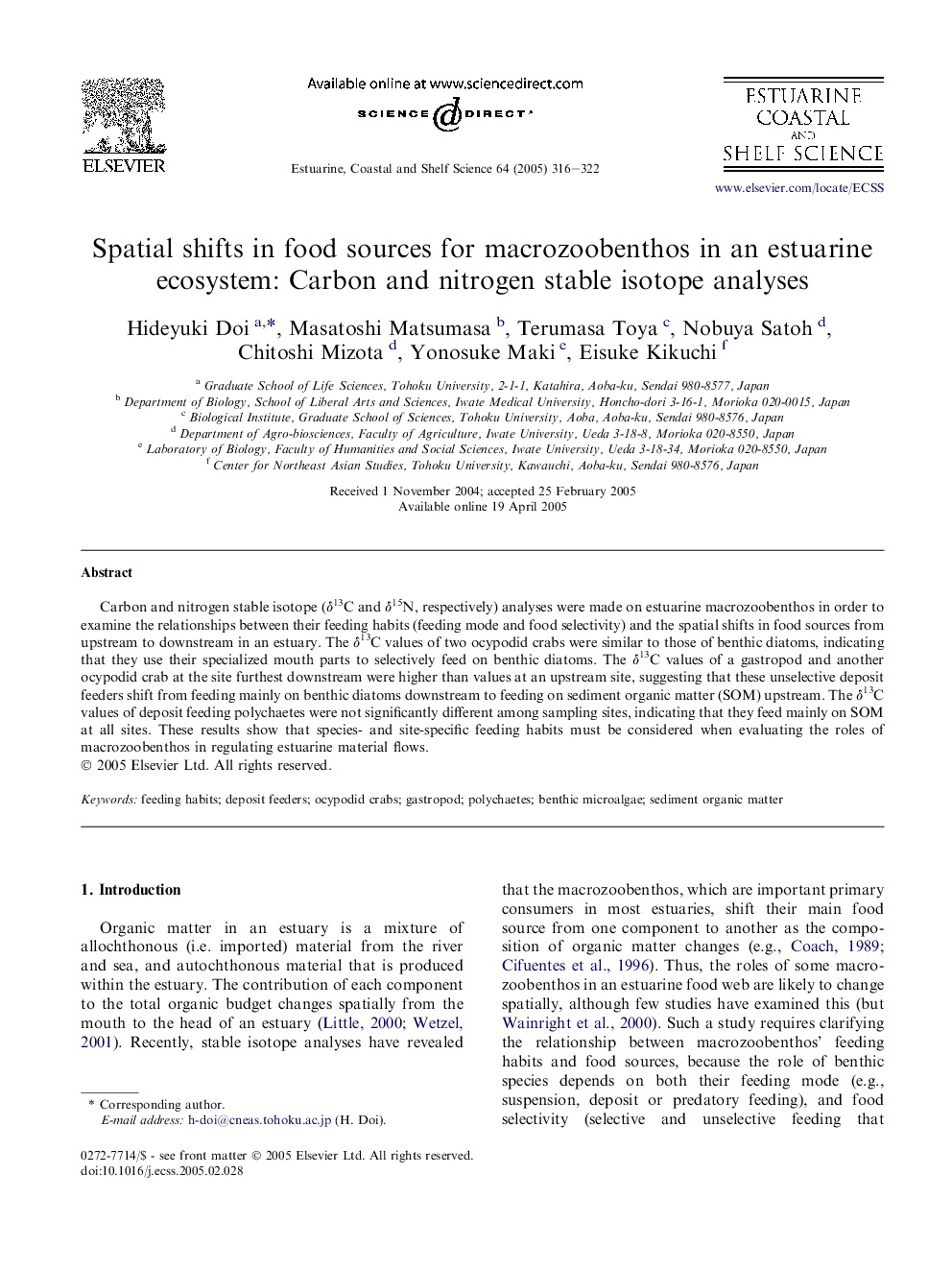| Article ID | Journal | Published Year | Pages | File Type |
|---|---|---|---|---|
| 9480579 | Estuarine, Coastal and Shelf Science | 2005 | 7 Pages |
Abstract
Carbon and nitrogen stable isotope (δ13C and δ15N, respectively) analyses were made on estuarine macrozoobenthos in order to examine the relationships between their feeding habits (feeding mode and food selectivity) and the spatial shifts in food sources from upstream to downstream in an estuary. The δ13C values of two ocypodid crabs were similar to those of benthic diatoms, indicating that they use their specialized mouth parts to selectively feed on benthic diatoms. The δ13C values of a gastropod and another ocypodid crab at the site furthest downstream were higher than values at an upstream site, suggesting that these unselective deposit feeders shift from feeding mainly on benthic diatoms downstream to feeding on sediment organic matter (SOM) upstream. The δ13C values of deposit feeding polychaetes were not significantly different among sampling sites, indicating that they feed mainly on SOM at all sites. These results show that species- and site-specific feeding habits must be considered when evaluating the roles of macrozoobenthos in regulating estuarine material flows.
Related Topics
Physical Sciences and Engineering
Earth and Planetary Sciences
Geology
Authors
Hideyuki Doi, Masatoshi Matsumasa, Terumasa Toya, Nobuya Satoh, Chitoshi Mizota, Yonosuke Maki, Eisuke Kikuchi,
